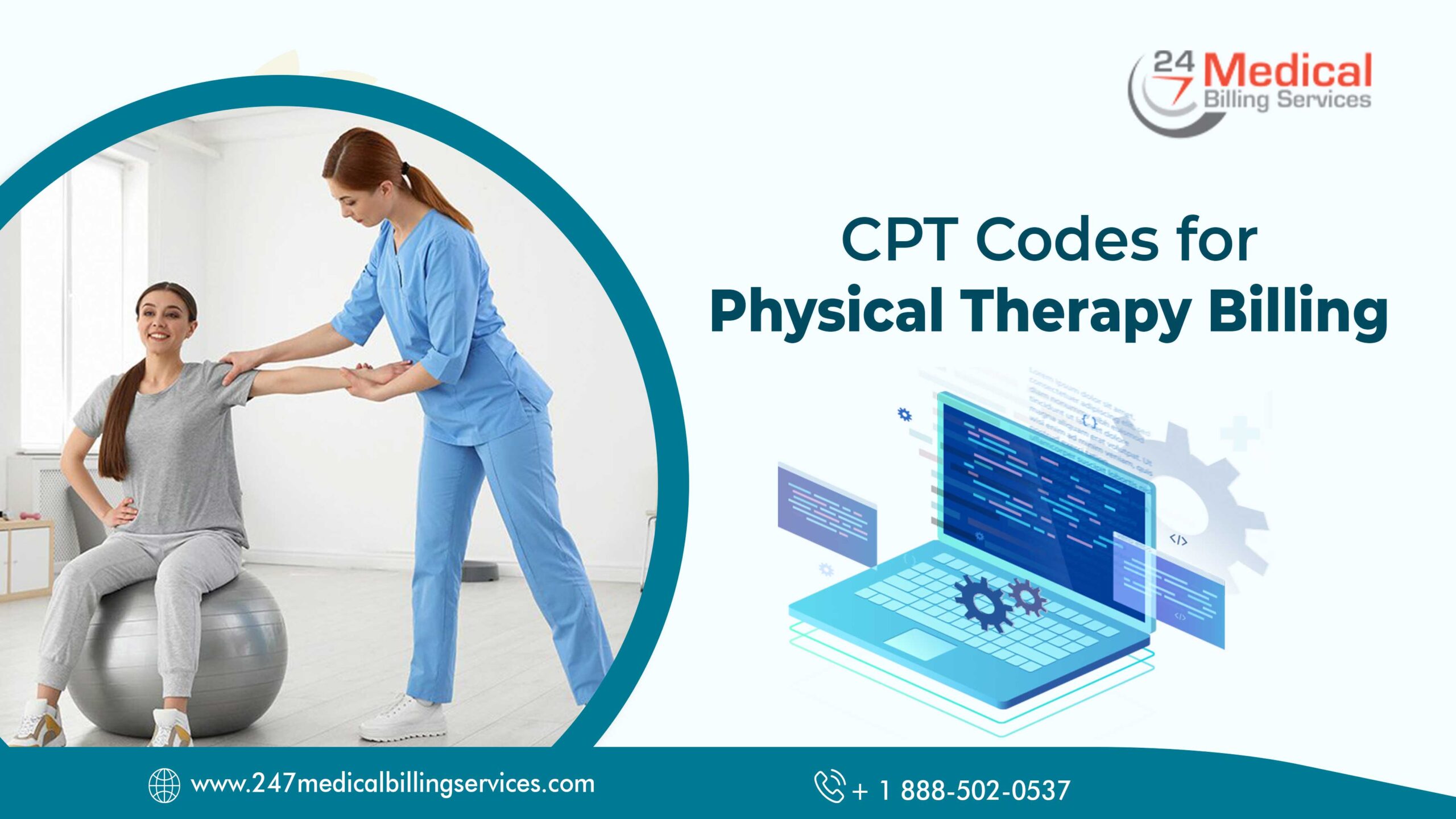
CPT Codes for Physical Therapy Billing
While treating the patient's physical pain, you might often get trapped into the maintenance of the coding accuracy as an immense pain for yourself. In fact, you might have encountered situations where you spend more time handling your claims rather than managing the patient's pain. No doubt, delivering a pain-free treatment to the patients is your first noble duty. But it doesn't mean that claiming the maximum reimbursement amount from the provider counts as the last thing. Both are equally important, and that's why we will talk about the common CPT codes for physical therapy billing services and how to maximize the claims out of it.
Code 97110: Therapeutic Exercise
This code includes the exercises for strengthening, range of motion, endurance, and flexibility that are applicable to single or multiple body parts. An eight-minute rule can be used (if necessary) to calculate the number of units of a time-based service to bill for Medicare and is billed in units for 15 minutes. While documenting this code, you must include all the body part/s treated, specifying the muscle and/or joints, specific exercises performed, and alike. Moreover, make sure to document the volume of exercises, i.e., weight force, number of sets, along with the repetition, torque, and duration.
Code 97112: Neuromuscular Re-education
CPT Code 97112 accounts for all the activities that facilitate re-education of movement, balance, posture, coordination, and proprioception/kinesthetic sense. This code also applies to one or multiple body parts and requires direct contact with a patient. Whenever the procedure exceeds 15 minutes, the descriptor can report this CPT code for every 15-minute interval. Along with the information such as volume of exercises including repetitions and sets and time interval, specific techniques such as Bobath, Feldenkrais, PNF, etc., must also be documented.
Code 97116: Gait Training
This code is used for providing training to all those patients who have impaired walking abilities due to muscular, neurological, or skeletal abnormalities. Under this code, every 15 minutes of treatment should be considered as one unit of the code. One thing that must be assured while using the code is to focus on the biomechanics of the gait cycle in one form or the other. However, the time spent by the patient for toileting or rest will not be billed. In fact, training provided to a patient to improve their cardiovascular health is not included in the gait training.
Code 97140: Manual Therapy
This code is known for reporting 'hands-on therapy techniques. These manual therapy techniques include joint manipulation and mobilization, connective tissue massage, passive range of motion, manual traction, soft tissue manipulation and mobilization, and therapeutic massage. The most important thing to be considered is that the 97140 Manual Therapy Code needs to be reported for every 15 minutes of manual therapy done in two or more regions. However, make sure of one thing, i.e., 15 minutes should be spent performing the pre-, intra-, and post-service work to report the 97140 code.
Code 97150: Group Therapy
Under this, PT offers therapeutic procedures to two or more patients simultaneously, either on land or in an aquatic environment. It necessitates the PT or PTA's constant presence, but not one-on-one time. Additionally, you're required to provide the information to Medicare such as type of group, participant number, etc. No matter how much time was spent in the session, each patient in the group will be charged for one unit of the group therapy code. However, the reimbursement rate will be lower if the patients were treated one-on-one. A Parkinson's Disease group fitness class or a "back school" program for those with chronic low back pain are a few examples of group therapy.
Code 97530: Therapeutic Activities
This code covers "dynamic activities" aimed at improving functional performance. Bed mobility, step-ups/stair negotiation, sit-to-stand training, hip-hinge training, squatting mechanics, tossing a ball, automobile transfer training, swinging a bat, and good lifting mechanics are some of the exercises that are included in this code. As to bill this code, a 15-minute increment along with the direct one-to-one contract is required. Moreover, these activities demand more skilled intervention as it requires a higher level of skill and repetition, thereby enhancing the reimbursement rates.
Code 97535: Self-care and Home Management Training
This code is meant for the training activities related to ADL, meal preparation, safety procedures and instructions using adaptive equipment/assistive technology devices, and so on. This code is generally used when a direct one-to-one contract of each 15 minutes is made. If the patient is facing trouble getting up out of a chair, then the transition/training can also be included in this code. However, it doesn't account for the training if you use sit-to-stand activity for strengthening. Until you are actively teaching, in-detail demonstrating, and offering literature with the patient's exercise program, you can't raise the bill under this code.
A Claim through 24/7 Medical Billing Services Can Make a Difference!
Proper documentation and maximum reimbursement with valid codes are the need of an hour to improve your financial health and focus on your job. But providing relief to your patients from physical pain is quite different from releasing your own pain of knowing the correct codes. After all, you didn't study medicine to be a great coder. That's why it would be better if you consider 24/7 Medical Billing Services to treat your financial health.

.png)